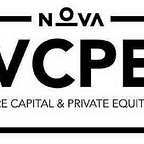Why is the European startup ecosystem lagging behind the US ecosystem?
While the European startup ecosystem is thriving and has developed a lot in recent years, the US startup ecosystem is still at the top and is used as a benchmark. Especially when comparing the number of startups, the money raised and the likelihood of success, the European ecosystem lags behind the American one. But why is that?
One obvious reason is the access to funding. Despite the pandemic over $130 billion in venture capital was raised in the US in 2020, compared to “only” $46 billion in Europe. Funding often decides about the growth and success of start-ups, and therefore makes regions and cities attractive to founders where investors with a lot of money are located. Even though Europe has some very strong investors for seed and early-stage funding, such as LocalGlobe, GFC, Index Ventures, Accel or HV Capital, it is missing crucial growth funding opportunities, which explains the huge gap in VC funding. Growth funding is especially important to build hypergrowth ventures, expand businesses and become successful in the form of Series C+ funding, IPOs, or Mergers & Acquisitions. In that regard the US proves to be more attractive. 50% of the world’s unicorns are from the US, while only 14% are from Europe, which is just another impressive number that underlines the US American dominance in the start-up space. Therefore, one of the best options for European start-ups to get growth-stage funding is to move to the US at a certain stage, ultimately hurting the European ecosystem.
But there are also other reasons that are not so easy to change for European ventures. Europe is a fragmented landscape compared to the US. Instead of one big country and market, Europe is a union of different countries, markets, cultures, regulations, and languages. This fragmentation creates some challenges for European start-ups, as they have to answer business-critical questions from the beginning that American start-ups don’t have to think about. One example is the market a start-up should address. Addressing only one market or region (in Europe) is not enough to scale quickly and become as big and successful as American start-ups. Hence the need to expand and internationalize. One problem that hinders this internationalization is the European culture of risk aversion, which is reflected not only in the conservative approach of founders, but also, as mentioned earlier, in the large gap in venture capital and growth funding from investors. Fortunately, some successful start-ups such as N26, Delivery Hero or Auto1 Group have achieved high growth through internationalization, and increasing returns on venture capital investments have massively improved the situation in Europe over the last four to five years.
Besides the funding and cultural barriers for European start-ups, regulations also impact the start-up ecosystem. On the one hand, stricter regulations in Europe do not foster founding new businesses and a fragmented regulatory landscape throughout Europe makes it harder to expand in new countries. On the other hand, regulations also impact the way employees can be compensated, making equity-options, for example, harder to implement. One has to admit that attracting talent, especially in the tech sector, often means paying higher wages. Salaries in the San Francisco Bay Area or New York City, for example, can be up to 50% higher than in Europe.
Even though Europe still faces some challenges to advance and become as big as the American start-up ecosystem, there is hope. Recent years have shown that more and more funding is available for European start-ups, changing the founding and investing culture as well as the desire for an easier regulatory framework can boost Europe’s ecosystem to become a global leader.
Disclaimer
This newsletter is fully independently produced by the members of the Nova Venture Capital and Private Equity Club. This club is run by students of the Nova School of Business and Economics.
You can access directly to the sources we used:
Broudy, K. et al., 2020. Europe’s start-up ecosystem: Heating up, but still facing challenges. McKinsey & Company. Available at: https://www.mckinsey.com/industries/technology-media-and-telecommunications/our-insights/europes-start-up-ecosystem-heating-up-but-still-facing-challenges# [Accessed 26 April 2021].
dealroom.co, 2020. The 2020 edition of Europe’s Most Prominent Venture Capital Investors is live. Available at: https://dealroom.co/blog/the-2020-edition-of-europes-most-prominent-venture-capital-investors-is-live [Accessed 26 April 2021].
Duong, M. H., n.d. The 3 Key Differences Between European vs US Startups. Available at: https://www.startupgrind.com/blog/the-3-key-differences-between-european-vs-us-startups/ [Accessed 26 April 2021].
Hodgson, L., 2020. Hot or not: Where European VC funding went in 2020. PitchBook. Available at: https://pitchbook.com/news/articles/hot-or-not-where-european-vc-funding-went-in-2020 [Accessed 26 April 2021].
Statista, 2021. Value of venture capital investment in the United States from 1995 to 2020. Available at: https://www.statista.com/statistics/277501/venture-capital-amount-invested-in-the-united-states-since-1995/ [Accessed 26 April 2021].
